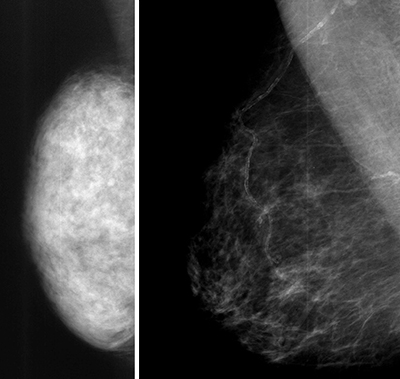Ultrasound increases sensitivity of standard breast cancer screening
Researchers at Tohoku University have taken the first step toward establishing a new screening methodology for breast cancer. The team, led by Noriaki Ohuchi, supplemented the standard mammography screening with ultrasonography and found that this improved the detection rate in a randomized controlled trial carried out in Japan1.
Mammography is the only screening method known to reduce breast cancer mortality, but it is inaccurate in young women and women with dense breast tissue, which is less transparent to the X-rays used to take a mammogram. Asian women tend to have denser breasts than their US and European counterparts, and the incidence of breast cancer at an earlier age is also higher in Asia, creating a need for improved cancer screening techniques.
In an effort to overcome the limitations of mammography, Ohuchi's team carried out the Japan Strategic Anti-cancer Randomized Trial (J-START), in which 72,998 women in their 40s were examined twice in two years. Half of the women received a standard mammography exam and half received a mammography supplemented with an ultrasound examination. The study found that adding ultrasound to the examination increased the sensitivity -- a measure of the correct identification of breast cancer -- from 77% to 91% and the detection rate by 50%. The combined test also increased the detection of early stage breast cancers.
Ohuchi's interest in cancer research began during his internship as a cardiologist. "I changed to oncology after seeing many, many patients suffering from cancer," he says. Breast cancer was much less common in Japan when he started, but he soon realized that it would become a major problem. "I wanted to establish and advance breast cancer research in Japan," he says.
Following a stint at the National Institutes of Health in the United States, Ohuchi returned to Japan, where he became a professor at Tohoku University's Graduate School of Medicine and a strong advocate of screening for breast cancer by mammography, rather than by physical examination. His efforts at the turn of the century were central to Japan's adoption of mammography as the standard screening technique. The J-START project may extend that legacy.
While the results are promising, long-term follow-up studies are needed before ultrasound screening can be recommended. Ohuchi's team will follow the progress of the women through Japan's cancer registries, but he warns that the final verdict is likely to be decades away. "We don't have the mortality reduction data yet, which is a very important issue. Evidence-based medicine should be based on mortality reduction. This study is just the first step," he says.

Breasts with low tissue density (right) are transparent in a mammogram, making it possible to spot tumors, while dense breasts (left) appear opaque.
Ⓒ 2016 Noriaki Ohuchi, Tohoku University
- Reference:
1. Ohuchi, N. et al. Sensitivity and specificity of mammography and adjunctive ultrasonography to screen for breast cancer in the Japan Strategic Anti-cancer Randomized Trial (J-START): A randomized controlled trial. The Lancet 387, 341-348 (2016).
DOI:10.1016/S0140-6736(15)00774-6
Contact:
Noriaki OhuchiDepartment of Surgical Oncology,
Graduate School of Medicine
Email: noriaki-ohuchi@med.tohoku.ac.jp

